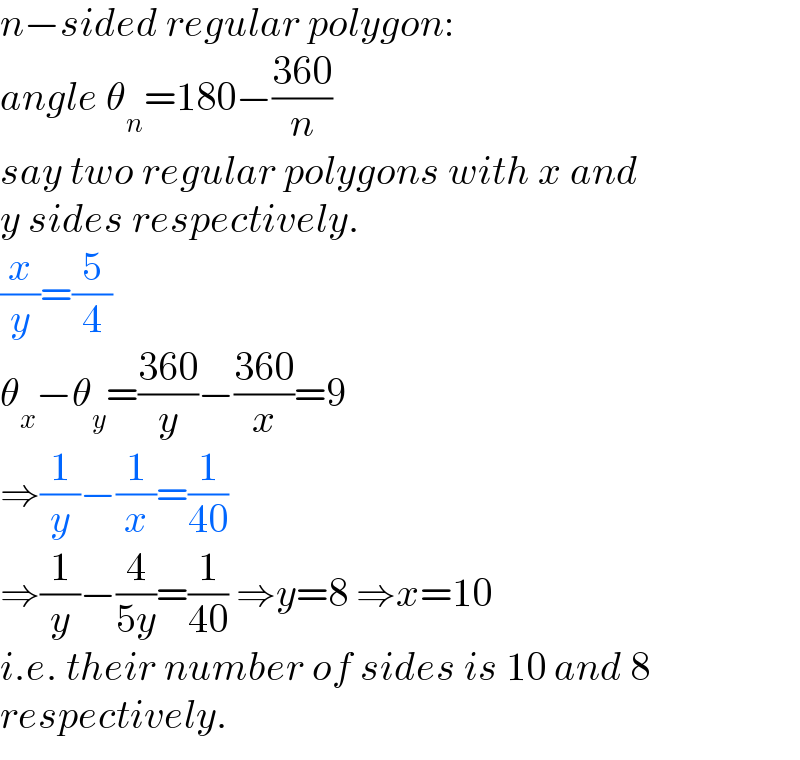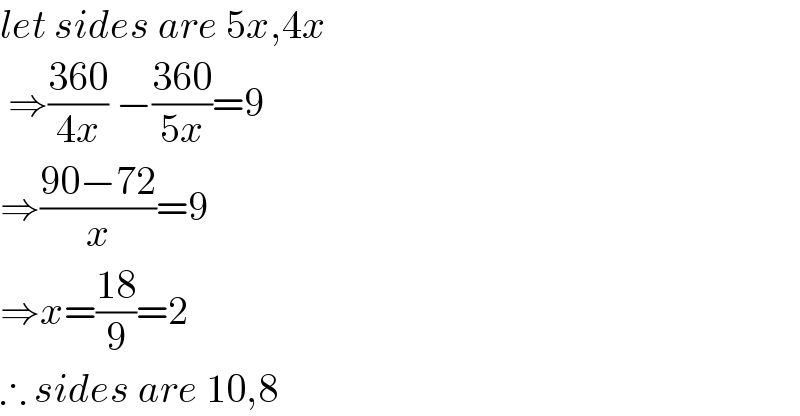
Question and Answers Forum
Question Number 182474 by Acem last updated on 10/Dec/22

Answered by mr W last updated on 10/Dec/22

Commented by Acem last updated on 10/Dec/22

Answered by som(math1967) last updated on 10/Dec/22

Commented by Acem last updated on 10/Dec/22

Commented by som(math1967) last updated on 10/Dec/22
����
Commented by Acem last updated on 10/Dec/22

Answered by Acem last updated on 10/Dec/22

